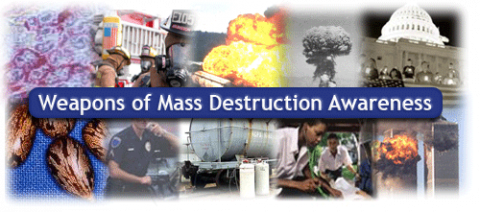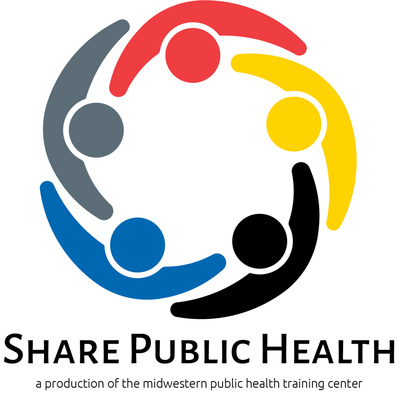There are five modules in this course. When you are finished reading this course overview, complete the Pre-test. You can access the Pre-test by clicking on the link provided on the course menu on the left. After you've completed the Pre-test, move on to the first module, "Prevention and Deterrence". Once you have completed this module and its practice exercises, go on to the following four modules which are: "Chemical Agents", "Biological Agents", "Radiological Materials", and "Explosive Devices".
The first module, "Prevention and Deterrence", begins by defining Terrorism and its impact in the foundations of America. You will also read about a variety of factors, indicators, and activities that can be manipulated by terrorist to make an attack more lethal. Other topics such as potential terrorist targets and general precautions in the event of a Weapon of Mass Destruction incident, are also discussed in this module.
The second module, "Chemical Agents", begins by describing what Chemical incidents are, and continues to discuss a variety of Toxic Industrial Chemicals, Materials, and its sources. Incapacitating agents and four different Chemical Warfare agents are presented as well. Close to the end of this module advantages and disadvantages of using Chemical Agents as WMD are described.
The third module, "Biological Agents", begins by describing the nature of Biological agents and the role of health personnel in the event of a biological attack. The characteristics of several bacteria, viruses, and toxins are discussed as they could be used as biological weapons. Also, information regarding how to avoid and isolate Biological agents, is provided.
In the fourth module, "Radiological Materials and Nuclear Weapons", the terms radiation and radioactive material are defined. Examples of life-endangering radioactive sources, radiological dispersal devices, and radiation exposure devices are provided. The difference between radiation exposure and contamination and the use of nuclear weapons as WMD are also discussed.
The fifth module, "Explosive Devices", starts by describing three categories of energetic materials and its sensitivity levels to different environmental factors. Further in this module, categories of high explosives are discussed along with examples of improvise explosives and its components. Important safety considerations for individuals are presented towards the end of the module.
Once you have completed the course, click on Resources to explore other sources of valuable information regarding the topics covered in this course. A Glossary of terms is also available in the navigation bar at the top of the page.
Intended Audience
individuals who, in the course of their everyday duties, "are likely to witness or discover a hazardous substance release..." (OSHA 1910.120(q) (6) (i))
Learning Objectives:
After the completion of this course you will be able to:
- Defineterrorism and WMD, list the indicators of potential terrorist acts, and list potential terrorist targets
- Describeselected chemicals agents and TIC teams, definitions, characteristics, and recognize the physiological signs and symptoms of exposure
- Describebiological agents, the signs and symptoms of exposure, physical characteristics of biological agents, and advantages and disadvantages of using biological agents for terrorism
- Describethe characteristics of radiation and radiological materials; identify the physiological sign and symptoms of exposure; identify radiation exposures devices, radiological dispersal devices, and nuclear weapons
- Identifythe characteristics of explosives, and the effects of a detonation explosive device
Pre-requisites/Learning Level
No pre-requisites
Competencies addressed
Core Competencies for Public Health Professionals identified
Domain 2: Policy Development/Program Planning Skills
- 2A11. Applies strategies for continuous quality improvement
CEUs Offered
None
Cost
Free
Modality/format
Online Self-Pace
Length
1 hour
Presenter(s) and/or Content Experts
Technical requirements:
- Adobe Acrobat Reader
- Flash Player
- Speakers
Registration requirements
Register a free account
Creation and/or update
August 28, 2014




